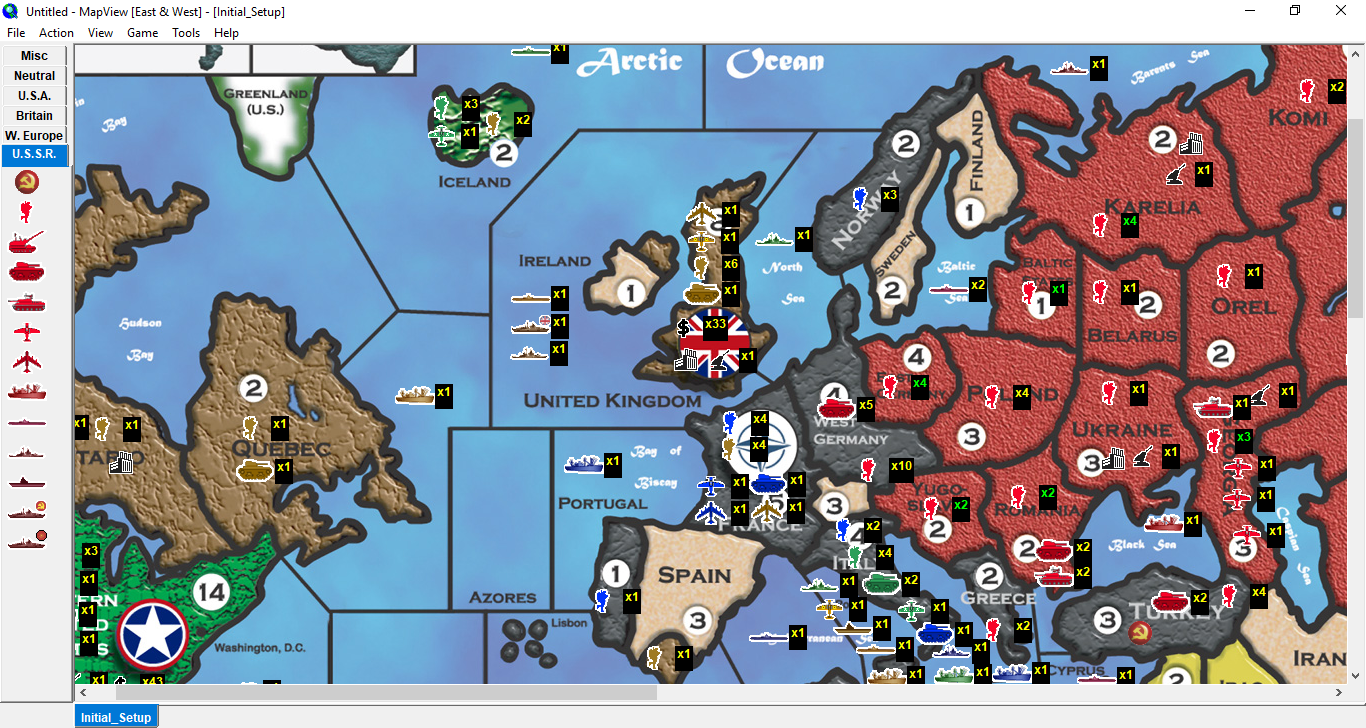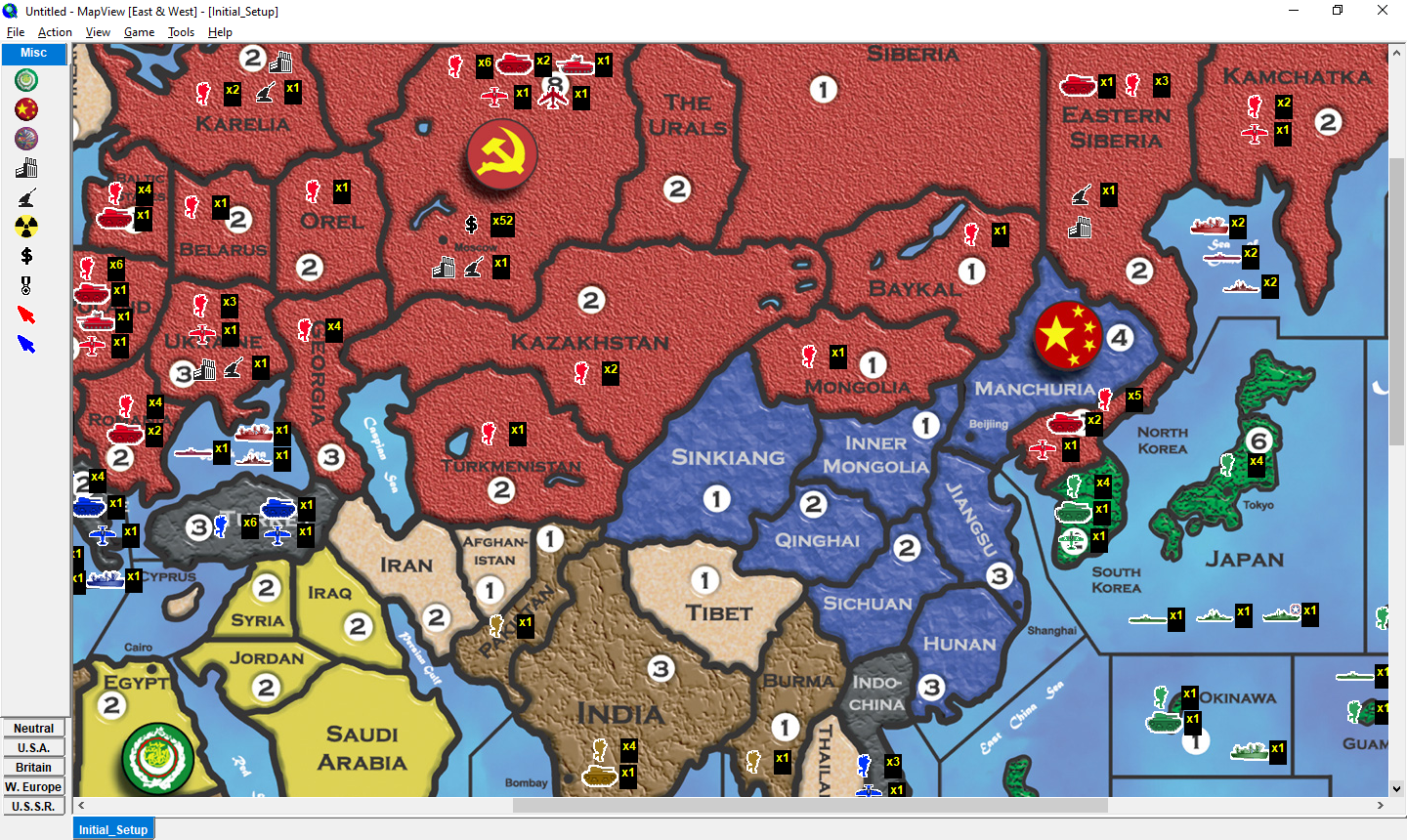War in the North
This post is basically going to be an amalgam of all the possible moves you can make, in order to secure Norway and Sweden; I keep trying to downplay the importance of this theatre, but my mind keeps wanting to hammer out the execution of such moves, so here we go.
As said before, this theatre should be a priority if the enemy begins committing forces to it. The other reason to attack Sweden is to close off the strait; you might want to do this if NATO liberates West Germany, and your “Baltic Wall” is in some way deficient (or insufficient to repel invasions.)
So what should we be looking for? As I’ve said before, the UK probably wants any transports it is using in the Atlantic to convene in the Irish SZ. This is because it’s the SZ from which the US can shuck-shuck into France, and so it just makes sense for NATO to concentrate their naval forces in one zone, instead of two (the 2nd being either the North Sea, or the Komi SZ.) Generally if Norway ends up being reinforced, it’s done by WE placing new infantry there, or the UK landing paratroopers.
Keep an eye out for:
- UK bombers rallying in the home island, for further paradrops
- UK (and potentially WE) transports in the North Sea
- US transports in the Komi SZ (to pick up infantry from Iceland)
Any of these are signs that the Allies want to try and open a new front in the North. Luckily, we can afford to be reactive in this theatre; gauge your opponents actions, and then decide if you should commit forces.
Reserve Group A (armor): Starting in Turkey, I’ve mentioned that you can kind of hedge your bets, and move to Ukraine on round 2 (allowing redeployment to either Karelia or Yugoslavia on round 3, depending on where you want to exert force.) You can also potentially move only as far as Georgia, if you’re sure you want to commit to the north, but also want the tanks in range to counter-attack Turkey if needed; this of course will work best if you committed your “flex” infantry on round 1 to placing in Georgia.
Armor Group B (Balkans): You can use these forces to pacify any landings in Yugoslavia or Greece on round 2, likely rallying in Yugoslavia on non-combat, with infantry coming down from Poland. What you can then do, is split off the heavy armor from this group, reassigning them to Karelia on round 3, while keeping your regular tanks in Yugoslavia (or West Germany.)
“Baltic Wall”: So with infantry moving from Karelia down the Baltic coast, your wall should be set up at the end of the Soviet non-combat movement phase, in round 3. This means that infantry placed in Karelia on or after round 3 can be committed to attacks in Scandinavia, without compromising the wall – so long as we continue to feed our frontline with reinforcements from other territories, such as Poland or Romania. As mentioned before, we’ll want to be maxing out our infantry placement on West Germany, Yugoslavia, and Greece, on any rounds which we control them at the start of our turn.
As you can see, this is all lining up for an assault on Norway in round 4. However, if we want to supplement our northern offensive with new heavy tanks placed in Karelia, we will want to have extra infantry to cover the territory defensively. What this effectively means is that whatever turn we plan to place armor in Karelia, we need to place infantry in Orel, 2 turns prior to that. If we start placing infantry in Orel on round 2, they will reach Karelia (via Komi) on round 4.
Note: By taking Norway, NATO bombers based in France or the UK no longer have a safe landing space, if they were wanting to drop paratroopers into Orel. Therefore, once we take Norway, we no longer need infantry in this territory for deterrence.
If we are planning to place heavy armor in East Siberia on round 3 (to take out South Korea) then the earliest we would want to place in Karelia would be round 4. Like I said, we can speed this up to react to our opponent (potentially ignoring South Korea to do so.) On the other hand…
Reserve Group C (cavalry): If we use this heavy armor to attack India on both rounds 2 and 3, we can reposition it to Karelia on round 4. We might want to consider having our placement of new tanks in Karelia line up with this. By doing so, we have 3 heavy tanks that can potentially move through Norway to attack Sweden (on round 5) in addition to whatever forces we want to reuse from our Norway attack.
Conclusions:
Overall, I think the best option is to wait until round 5 to attack Norway (with the earliest we could attack probably being in round 4.) This allows us an extra round to have Armor Group B able to mop up any shenanigans in the Balkans, as well as an extra round for Reserve Group A to be able to counter-attack Turkey, and still reposition. This also allows us to delay placing new tanks in Karelia until round 5 (to be used on Sweden in round 6) giving us a “breather” in round 4, with which to make sure we place enough infantry on all of our borders (after having deployed new armor in East Siberia, on round 3.) We can speed up the deployment by starting to place in Orel as early as round 2, but if we’re attacking on round 5, it can wait a bit. We can also beef up the attack by committing one of our air groups to the front, once India falls (taking it away from either the India theatre or East Siberia.)









